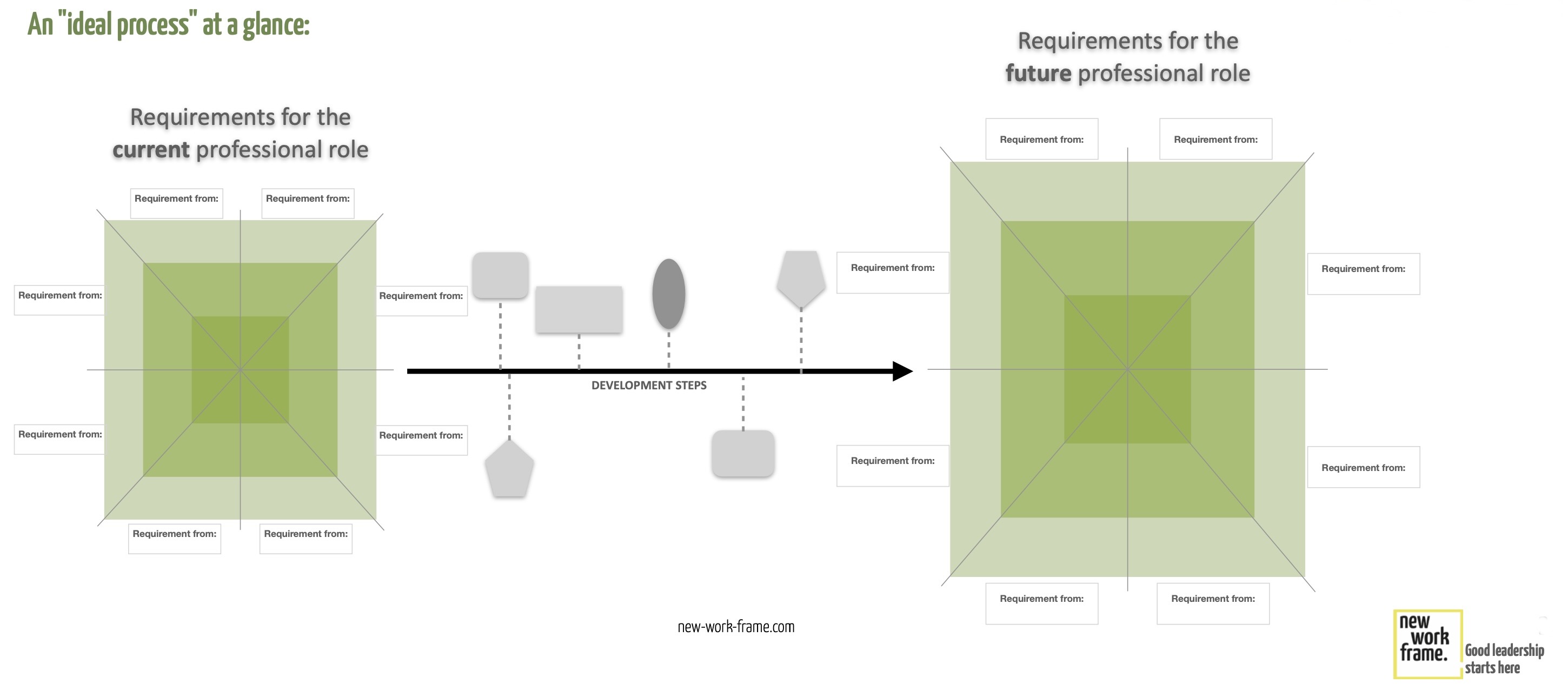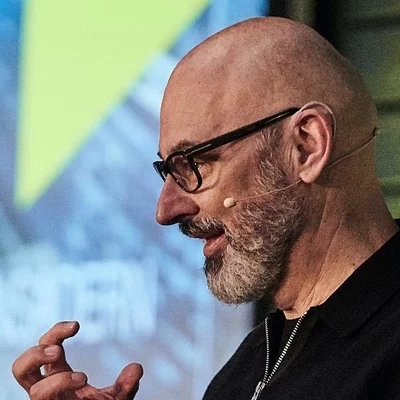Now is the time: Once the target image of the professional role has been formulated (on the basis of the role negotiation with the most important interaction partners), the best development path to achieve this can be determined.
At this point, we would like to emphasize how important the quality of the target image that was previously developed is for this step. It does not matter whether the target image applies to a short-term period because the environment is undergoing dynamic change, or whether it covers a long-term horizon: The clearer and more elaborate the target image we can create for a professional role, the easier it is to work out the necessary development steps and the "program" that the role holder* or role "candidate" can use to develop towards it.
A clear target image as a starting point for development planning
From our experience, we recommend that the starting point for the development program is a precise description of the behaviour and performance results that are required in the respective situation. And alongside this description of the future image, we then place an assessment of the current performance portfolio: "Which aspects of the future performance image does someone already fulfill today - and to what extent or in what qualitative form?" "And what development requirements arise from the visible "gap?"
We recommend not thinking in terms of the usual competencies here: the more specialized a professional role is, the more specialized the interaction partners, the more demanding the context in which a role has to "perform", the less a formulation such as "communication skills" is sufficient to cover the specific development needs required in a role. Even "problem-solving and decision-making skills" may still be far too unspecific; perhaps "problem-solving and decision-making skills in negotiations with important customers" is a sufficient approximation. But perhaps the phrase "problem-solving and decision-making skills in negotiating with important customers from the Arab world" is also needed to reflect the specific future requirements of the professional role.
Strong development partners facilitate planning and the path to the future role
What should become clear from this example is the paramount importance of an individual and concrete description of future requirements. Only then - especially in the case of highly qualified and demanding professional roles - can we put together a targeted development plan.
This is where the key influence exerted by line managers, mentors and HR becomes clear: the contribution to development is immense when it comes to supporting and accompanying the development towards a professional role. The exchange and feedback from these key people not only provide important guidance, but also promote self-reflection and an understanding of one's own and future role within the company or organization. It is crucial that this dialog is continuous, frequent and constructive in order to effectively support the development of the role holder and ensure the achievement of objectives.
Draw from the full: Identify everything that helps you to achieve your target image
Another important step in the development process is the identification and use of resources and tools required for further development. This includes not only training and development, but also specific networks, mentoring programs and the opportunity to gain new experience in the very specific future practice. It is essential that these resources are targeted and tailored to the specific development needs of the role to maximize effectiveness.
Regularly monitoring and evaluating the progress of development is important. This can be done through regular feedback meetings, monitoring performance indicators and reflecting on one's own progress against set targets. This evaluation not only helps to determine the current status of development, but also allows the development program to be adjusted to make it even more effective.
Here is an overview of the Growth Journey: the current status on the left and the target image of the role to be achieved on the right. In between, the individual development plan towards the goal!

Conclusion
Ultimately, developing towards a professional role requires a combination of personal commitment, support from line managers and mentors, and access to the right resources and tools. By having a clear focus on the specific requirements of the role and following a customized development plan, individuals can enhance their skills and successfully - and more importantly, significantly faster than without this targeted development - establish themselves in their professional role.
This concludes our series on "Professional roles in organizations". At the interface between "organization and individual", the journey to mastering a professional role is both challenging and rewarding. It requires continuous learning, adaptability and a willingness to look beyond one's own horizons. Through a targeted development strategy based on individual needs and the specific role, we can ensure that we not only grow as individuals, but also make a valuable contribution to our organizations and - hopefully - society as a whole.




